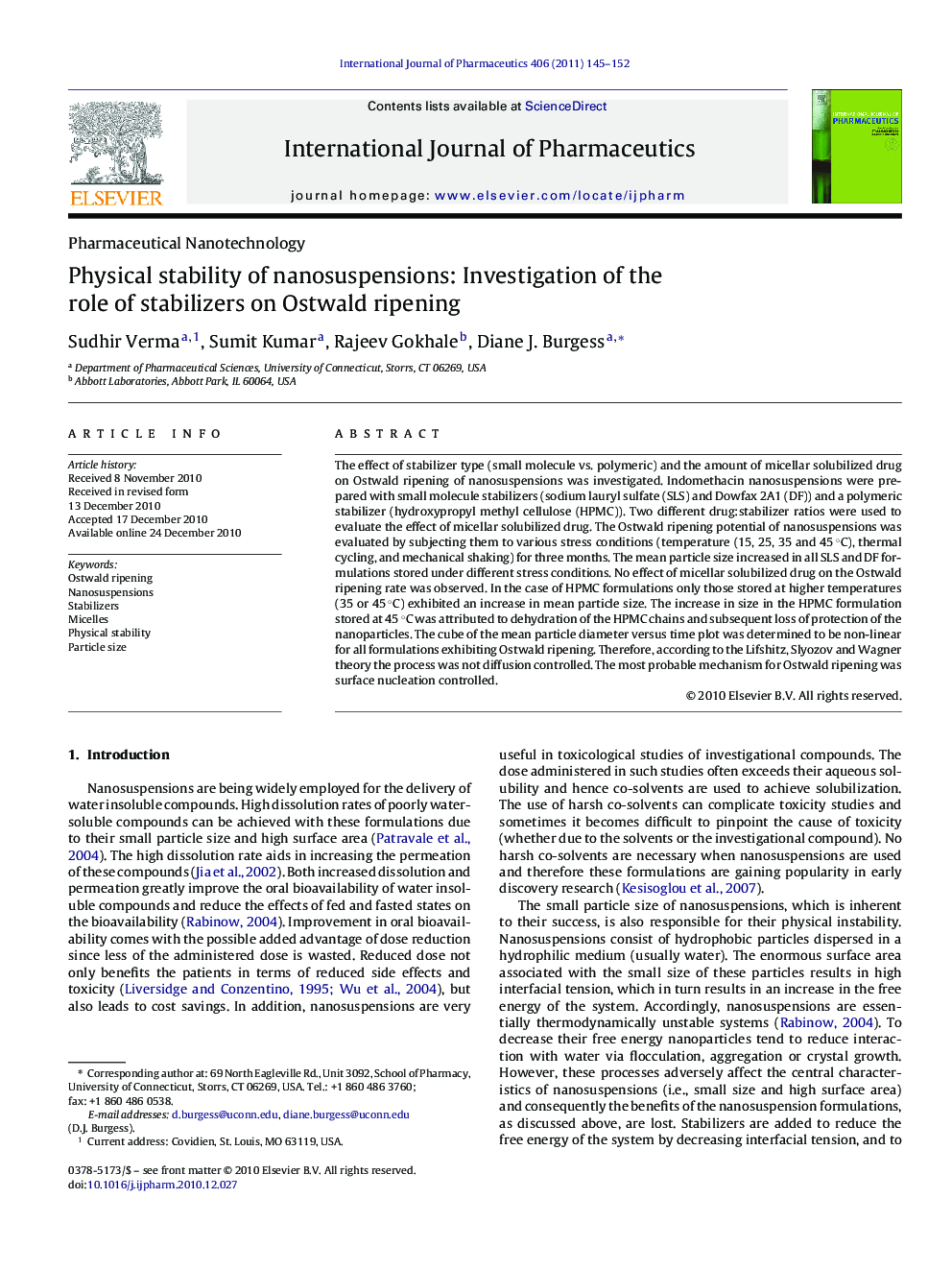| Article ID | Journal | Published Year | Pages | File Type |
|---|---|---|---|---|
| 2503742 | International Journal of Pharmaceutics | 2011 | 8 Pages |
The effect of stabilizer type (small molecule vs. polymeric) and the amount of micellar solubilized drug on Ostwald ripening of nanosuspensions was investigated. Indomethacin nanosuspensions were prepared with small molecule stabilizers (sodium lauryl sulfate (SLS) and Dowfax 2A1 (DF)) and a polymeric stabilizer (hydroxypropyl methyl cellulose (HPMC)). Two different drug:stabilizer ratios were used to evaluate the effect of micellar solubilized drug. The Ostwald ripening potential of nanosuspensions was evaluated by subjecting them to various stress conditions (temperature (15, 25, 35 and 45 °C), thermal cycling, and mechanical shaking) for three months. The mean particle size increased in all SLS and DF formulations stored under different stress conditions. No effect of micellar solubilized drug on the Ostwald ripening rate was observed. In the case of HPMC formulations only those stored at higher temperatures (35 or 45 °C) exhibited an increase in mean particle size. The increase in size in the HPMC formulation stored at 45 °C was attributed to dehydration of the HPMC chains and subsequent loss of protection of the nanoparticles. The cube of the mean particle diameter versus time plot was determined to be non-linear for all formulations exhibiting Ostwald ripening. Therefore, according to the Lifshitz, Slyozov and Wagner theory the process was not diffusion controlled. The most probable mechanism for Ostwald ripening was surface nucleation controlled.
Graphical abstractThe effect of stabilizer type and the amount of micellar solubilized drug on Ostwald ripening of nanosuspensions was investigated. The most probable mechanism for Ostwald ripening was found to be surface nucleation controlled.Figure optionsDownload full-size imageDownload as PowerPoint slide
